
by Eddie Powell | Jun 3, 2014
During this growing season monitor your plants and keep them healthy as a healthy plant will be able to better survive an invader attack.
Nematode populations can be reduced temporarily by soil solarization. It is a technique that uses the sun’s heat to kill the soil-borne pests. Adding organic matter to the soil will help reduce nematode populations as well. Nematodes are microscopic worms that attack vegetable roots and reduce growth and yield. The organic matter will also improve water holding capacity and increase nutrient content.
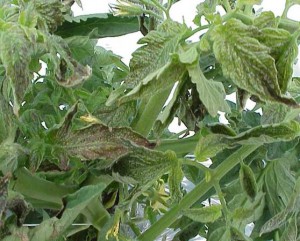
Tomato Spotted Wilt Virus
Credits: UF/IFAS
If you choose to use pesticides, please follow pesticide label directions carefully. Learn to properly identify garden pests and use chemicals only when a serious pest problem exists. If you have questions please call your UF/IFAS county extension office. We can provide helpful information about insect identification.
Organic gardeners can use certain products like BT(Dipel) to control pests. Please remember not every off-the-shelf pesticide can be used on every crop. So be sure the vegetable you want to treat is on the label before purchasing the product.
Follow label directions for measuring, mixing and pay attention to any pre-harvest interval warning. That is the time that must elapse between application of the pesticide and harvest. For example, broccoli sprayed with carbaryl (Sevin) should not be harvested for two weeks.
Spray the plant thoroughly, covering both the upper and lower leaf surfaces. Do not apply pesticides on windy days. Follow all safety precautions on the label, keep others and pets out of the area until sprays have dried. Apply insecticides late in the afternoon or in the early evening when bees and other pollinators are less active. Products like malathion, carbaryl and pyrethroids are especially harmful to bees.
To reduce spray burn, make sure the plants are not under moisture stress. Water if necessary and let leaves dry before spraying. Avoid using soaps and oils when the weather is very hot, because this can cause leaf burn.
Control slugs with products containing iron phosphate.
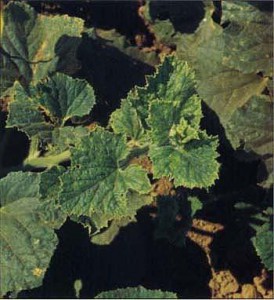
Cucumber Mosaic Virus
Credits: UF/IFAS
Many common diseases can be controlled with sprays like chlorothalonil, maneb, or mancozeb fungicide. Powdery mildews can be controlled with triadimefon, myclobutanil, sulfur, or horticultural oils. Rust can be controlled with sulfur, propiconazole, ortebuconazole. Sprays are generally more effective than dusts.
by Mary Salinas | Nov 4, 2013
For centuries, people annoyed with plant pests have used oils to control insects, mites, and even some fungal diseases. Current oil products are better than ever!
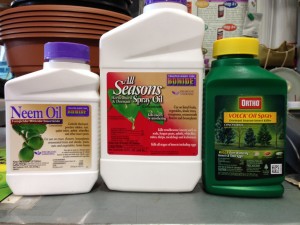
Sample oil products for pest control. Photo by Mary Derrick.
Commercially available horticultural oils are mineral oils from refined petroleum products. Impurities are removed and then an emulsifying agent is added that allows the oil to mix with water for application. Neem oil is a newer product that has become increasingly popular; the oil is an extract of the seeds of the neem tree.
What are some of the advantages of using an oil for pest control?
- Oils are inexpensive and easy to apply
- Oils can be used on most plants (check the label for a list!)
- Oils control a wide range of pests that feed on plants (again, check the label for a list of pests the product will control!)
- Oils pose a low risk to people, pets, and desirable beneficial predators
- Since oils kill pests by blocking their breathing holes (spiracles) and/or gumming up their mouthparts, there is no chance for resistance to develop
- One product can control both insects and some diseases like powdery mildew at once
- Oils can be combined with some other pesticides to provide greater control
[warning] Don’t combine with, or use within 30 days of, any sulfur based pesticide. The combination can harm your plants![/warning]
There are always drawbacks to a product. What are the drawbacks?
- Some plants (including cryptomeria, junipers, cedars, maples, and redbud) are damaged by oils – check the label!
- Ensure good coverage during spraying as pests must be contacted with the oil in order for the control to work
- Oils break down quickly and reapplication may be necessary
- Check the label for instructions on the temperature range when it can be used. Older formulations generally are safe when temperatures are in the 40 to 80°F range but ultra-fine oils can generally be safely applied during hotter weather.
For further information:
Natural Products for Insect Pest Management from UF IFAS Extension
Insect Control: Horticultural Oils from Colorado State University Extension
Less Toxic Pesticides from Clemson University Cooperative Extension
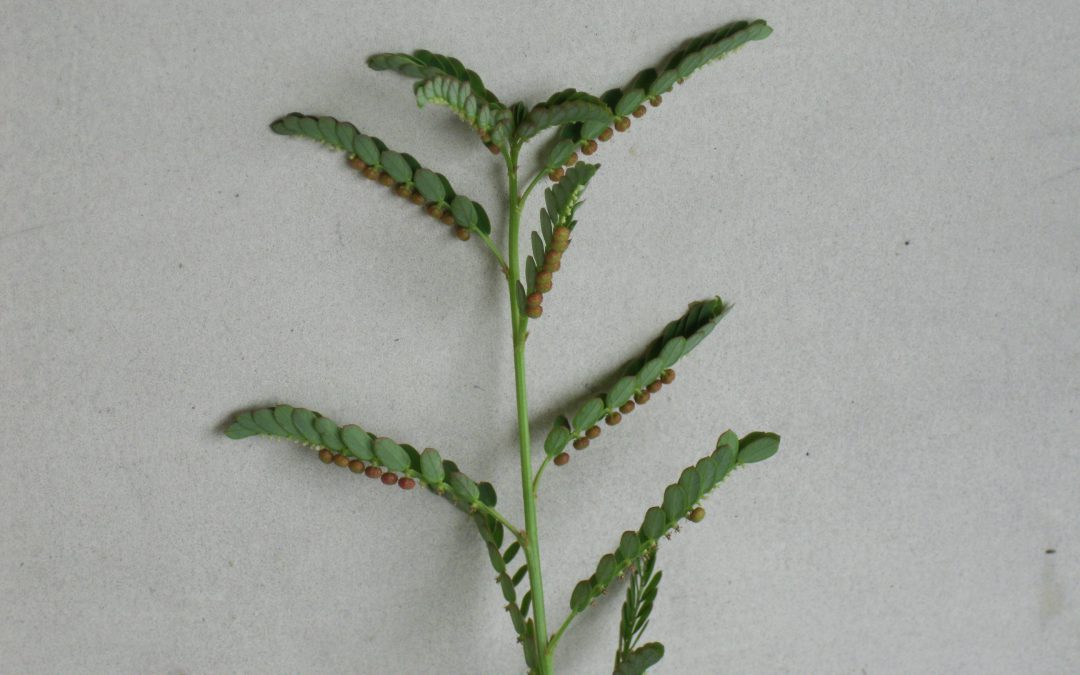
by Julie McConnell | Aug 5, 2013
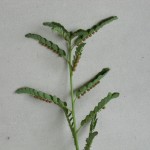
Chamberbitter
Above average rainfall this summer has supplied water to more than just our landscapes, weeds are benefiting and flourishing as well.
Just as with any other landscape pest, proper weed control starts with accurate identification and knowledge about the life cycle of the weed.
When weeds are low in number, mechanical control (pulling, mowing) is a good start. If weed population continues to increase and herbicide options are considered, several questions need to be answered before product application.
Questions you need to ask yourself about your weed and site:
- What weed(s) are you trying to control?
o Be sure you know what the name of the weed is so that you can find it on your product label “weeds controlled” list; if you need help with identification contact your local county extension office
- What is your site?
o Lawn – specific turfgrass is important, what is safe to use on one type may kill another
o Ornamental beds – again note specific plants near your treatment area in case of sensitivity
o Water bodies – some herbicides are not labeled for use within a given distance of water; if the weed is in or around the water only use herbicides listed for aquatic weed control
- What is the life cycle of your weed?
o Annual – one season life cycle, summer annuals complete their life cycle between spring and fall; winter annuals are active between fall and spring
o Biennial – two growing season life cycle
o Perennial – plant lives for three or more years
- What category does your weed fall into?
o Grasses – one seed leaf as it emerges from the soil; hollow, rounded, stems with nodes, parallel veins in true leaves; examples are crabgrass, dallisgrass, cogongrass, torpedograss
o Broadleaves – have two seed leaves and true leaves have net-like veins and usually have showy flowers; examples are lespedeza, dollarweed, clover, chickweed, henbit, florida betony
o Sedges/Rushes – sedges have solid triangular stems; rushes have round stems; both like moist or wet habitat; examples are purple nutsedge, yellow nutsedge, beak rush
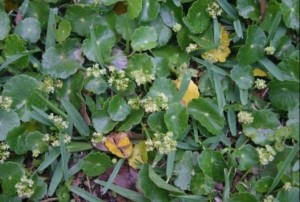
Dollarweed: Image Credit Edis ENH1128
Basic information about herbicide categories:
For more information read EDIS Publication “Weed Management in Home Lawns”







